There’s an old saying in engineering circles: If it ain’t broke, don’t fix it. That sums up the changes to the Subaru Forester for 2025.
It has been updated.
What It Is
The Forester is a compact-sized crossover that differs from other small crossovers in its class in two meaningful ways. The first being it is the only crossover you can buy that has a horizontally opposed four cylinder engine, which means has its cylinders laid flat and each one boxing its opposite across the crankshaft. This layout is desirable because the boxing action cancels out vibration and because it’s a compact layout vs. in-line engines. And because it’s a handling/balance advantage to have most of the engine’s weight lower down in the chassis of the car.
The Forester also comes standard with AWD and it’s a more sophisticated kind of AWD in that it can modulate the power delivery from side to side as well as front to back. This is a handling as well as traction advantage, on road and off. The latter in italics because while the Forester isn’t an SUV – much less a 4×4 – it has almost 9 inches of standard ground clearance and driver-selectable X-Modes, including Deep Snow/Mud – and these features endow this crossover with more poor weather/unpaved-road capability than the typical crossover.
Prices for the 2025 Forester start at $29,695 for the base trim – which like all Forester trims comes standard with a 2.5 liter “boxer” four and AWD and a new (larger) secondary touchscreen.
The next-up Premium ($31,995) and Sport ($34,495) and Limited ($35,995) trims are defined by their differing standard amenities, such as the StarTex easy-clean simulated leather upholstery that comes standard with the Sport, along with different wheel sizes/designs.
A top-of-the-line Touring ($39,995) comes standard with most of the features that are optional on the lower-priced trims and has been tuned for a softer/quieter highway ride.
What’s New For 2025
Subaru changed almost everything but didn’t make any radical changes.
The basic layout is the same – and it’s hard to see much difference, at a glance – but the new Crosstrek is about three quarters of an inch longer and (once you look inside) you’ll see it’s fancier-looking than before – the most obvious thing being the now-standard and much larger LCD touchscreen.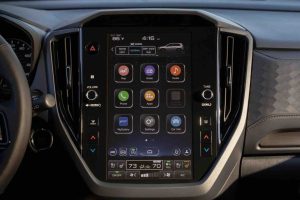
There are also some things you can’t see, including a new “dual pinion” steering rack that’s similar to the one used in the Subaru WRX (this is intended to make the Forester’s steering feel sharper and more like the WRX) along with fine-tuning of the 2.5 liter boxer four to improve low-end torque.
Subaru says the chassis is also stiffer by about 10 percent, the change meant to make this Soobie feel more solid to the driver when it hits potholes and so on.
There are also mild but many exterior styling changes.
What’s Good
More capable in bad weather (and on bad roads) than other crossovers in the class, such as the Toyota RAV4 and Honda CR-V.
Boxer engine is different than the engines in all the other crossovers in the class.
AWD isn’t extra-cost.
What’s Not So Good
No optional (more powerful) engine.
CVT automatic is the only available transmission.
Base price is up by about $2,600 vs. last year.
Every Forester trim comes standard with a 2.5 liter four cylinder engine – which isn’t unusual (as such) in the class. What is unusual about the Forester’s engine is that it’s a boxer engine. This type of engine is not upright – or angled – and its cylinders aren’t in-line.
They are laid flat and opposed to one another.
This has a number of advantages, including (as mentioned above) that the engine is much more compact than an inline engine with the same number of cylinders and it naturally cancels out the engine vibrations that in other engines require heavy counterbalancing weights on the crankshaft so you don’t feel them.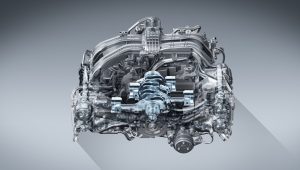
The engine is also flat – and so not as tall – and that puts the weight lower in the car’s chassis, which improves the car’s handling. This is one of the reasons why Porsches have boxer engines.
There is also an intangible advantage – shared with Porsches. It is that boxer engines have a different character. They sound different than in-line and angled engines. And that character helps make the Forester a little bit different than all those other crossovers.
That’s no small difference in this class of vehicle.
Also, the Forester’s boxer isn’t turbocharged – because it is 2.5 liters rather than 2.0 liters or even less than that. It is large enough, in other words, to make adequate power (180 horsepower) without needing a turbocharger.
This reduces both the number of parts – as well as the pressure this engine isn’t under to produce power and that is an inherent advantage as regards engine longevity. A turbocharged engine can of course be put together with heavier-duty parts so as to be able to handle the pressure. But it is a general maxim that an engine that lives an easier life will usually live a longer life. It is also a certainty that you’ll never be faced with the expense of replacing a turbocharger because this Soobie doesn’t come with one.
It also does not – for now – come with a more powerful engine such as the smaller (2.0 liter) turbocharged boxer four that’s available optionally in several other Soobie models, including the high-performance WRX.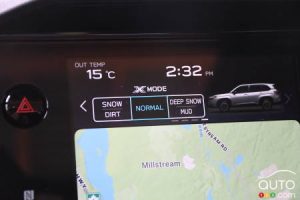
But this Soobie does get some of the WRXs joi d’ vive – via a steering rack that’s tuned to react as it does in the WRX.
Also, most of the others in this class don’t offer an optional, more powerful engine either. And several of the Forester’s rivals – such as the Honda CR-V – do come standard with much smaller – turbocharged – engines.
On the downside – and like all of the others in the class – the Forester comes only with an automatic and (like many of them) is a CVT automatic. These transmissions don’t shift up and down because they don’t have fixed gears; instead, they continuously vary the range, which does help improve fuel economy. The Forester touts 26 city, 33 highway.But CVT automatics also tend to increase drivetrain noise, especially when paired with an engine that’s not very powerful, because the CVT will hold the engine at higher RPM when you’re accelerating rather than (as with a conventional automatic) shifting up a gear as you accelerate, which reduces engine RPM and drivetrain noise.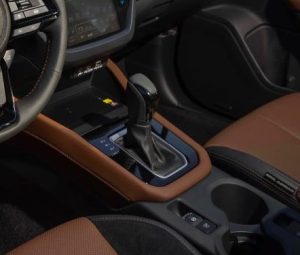
Small crossovers like this used to be available with manual transmissions – which made them more fun to drive. But manual-equipped vehicles are impossible to program to score as high on government fuel economy tests as automatics can be jiggered with to do – and that creates problems for car companies trying to comply with federal fuel economy mandatory minimums.
If a CVT serves to increase the test score by even as little as 3 or so MPG, it is worth going with the CVT – and retiring the manual.
Which is just what Subaru and the other car companies have had to do.
Driving the Forester isn’t eventful – and it’s not supposed to be. This crossover – like other crossovers – is meant to be a practical conveyance rather than a ride.
The distinction is important.
The WRX is an example of a ride. Of course, the WRX isn’t very practical. And it’s a lot thirstier. You pays your money and you takes your choice.
But Subaru has tried to infuse some WRX-ness into this conveyance via the new, WRX-like steering rack, which imparts WRX-like quicker steering feel than before. Unfortunately, it is not complemented by WRX-like responsiveness from the accelerator pedal, although the increase in low-end torque helps this Soobie respond a little more forcefully than previously. It takes about 8.3 seconds to get to 60 – which is par for the class, especially when you compare the Forester, which comes standard with AWD, to rivals equipped with their usually optional AWD systems. Some of these rivals can get to 60 a little sooner when you skip the AWD, which sheds about 150 pounds of weight, generally speaking.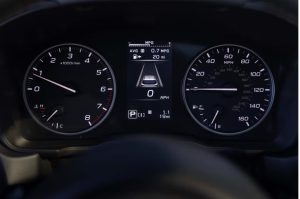
But not much sooner.
And to achieve that small acceleration gain, you have to give up the traction advantage of AWD. Which is also a handling advantage – in the Forester’s case – if you’re willing to use it.
As mentioned earlier above, the Forester’s AWD system can modulate power flow from side to side as well as front to rear. The latter helps keep the front wheels – which are typically the primary drive wheels in AWD-equipped vehicles – from slipping when the road is wet or snow-slicked by routing power to the rear wheels when the system senses the front wheels are beginning to lose grip. But the former – side-to-side – can correct for under and oversteer during high speed cornering, keeping the car straight while you’re booking. This is why AWD-equipped hot rods like the WRX are so tenacious in the curves.
But the WRX also has the power to go along with all that grip. The Forester doesn’t. You can enter a corner faster than in other crossover appliances and hold your line better at higher speeds, but coming out of the corner, there’s not much gumption available to bullet ahead, as you could if you were driving a WRX.
Of course, this isn’t a WRX – and so it’s not fair or even especially relevant to make a direct comparison. On the other hand, there is no good reason why the Forester – and other crossovers, for that matter, couldn’t be a little more WRX-like and one way that they could be would be if they were available with a manual transmission – as all of them once were. Some of them (e.g., the RAV4) were once available with six cylinder engines and manual transmissions, if you can imagine that.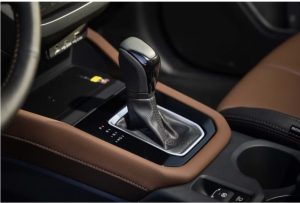
Now they’re all four cylinder and automatic-only. Most – including the Forester – are CVT automatic-only. This has sucked out most of the personality that once existed – believe it or not – from crossovers as a class. If Subaru offered a manual in the Forester, it would be the only crossover in the class that did and that would likely steer more buyers who need a practical vehicle but would like one with more personality Subaru’s way. A fine example of this being the very popular Crosstrek – Subaru’s smallest crossover – which was available with a manual up until 2023 – and that made it more fun to drive than other, automatic-only small crossovers.
But Subaru had to take the manual out of play because of CAFE – the federal government’s mandatory MPG minimums – and now that crossover is also like the others in its class.
The Forester is different than other crossovers in its class, but not so much on account of the way it looks. Rather, on account of how high it sits relative to most crossovers in its class.
This Soobie comes standard with almost 9 inches of ground clearance, which is an even greater advantage than AWD when driving in snow. AWD offering not much advantage when the vehicle isn’t high-up enough to drive over the snow.
The factory supplied tires are the weak link here.
They are fine on the street and in the wet but a set of tires rated for the snow (and mud) would definitely make the most of the lift and the AWD this Soobie offers. And you can get that – from the factory – in the Wilderness version of the Forester. But the 2025 version isn’t available yet. It should be once we get into calendar year 2025 a couple of months from now.
And the 2025 Forester does look a little different – because there are many small differences, in terms of exterior and interior styling changes – but you will only notice them if you look closely because the overall shape is still pretty much as it was.
As is the size.
Subaru did not upsize the Forester, which is almost exactly the same length (183.3 inches now vs. 183.7 previously) and interior dimensions – including cargo capacity behind the second row (29.6 cubic feet) and with the second tow folded (74.4 cubic feet) are likewise pretty much the same.
Which is fine, because the size of this Subaru didn’t need to be “fixed.”
The main changes are upgrades, including the new/larger LCD touchscreen and the now-available foot-swipe activated power rear liftgate.
The Rest
Everything has gotten more expensive over the past several years – and the Forester is no exception. The new model costs $2,600 more to start than the previous model and while you do get an updated Forester for your money, it nevertheless costs significantly more money at a time when people are less able to pay it.
$2,600 is not a huge difference – when factored over the course of six year loan – but it’s not a small difference, either.
The Bottom Line
The Forester is as it was – just slightly nicer and a little bit pricier.
. . .
If you like what you’ve found here please consider supporting EPautos.
We depend on you to keep the wheels turning!
Our donate button is here.
If you prefer not to use PayPal, our mailing address is:
EPautos
721 Hummingbird Lane SE
Copper Hill, VA 24079
PS: Get an EPautos magnet or sticker or coaster in return for a $20 or more one-time donation or a $10 or more monthly recurring donation. (Please be sure to tell us you want a magnet or sticker or coaster – and also, provide an address, so we know where to mail the thing!)
If you like items like the Baaaaaa! baseball cap pictured below, you can find that and more at the EPautos store!



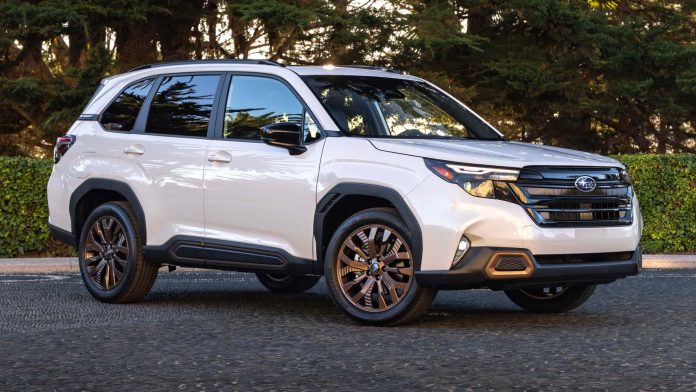

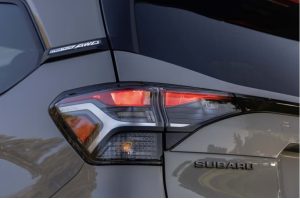
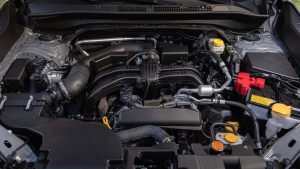
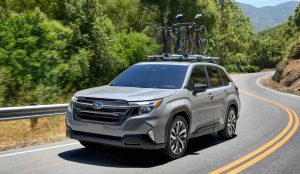
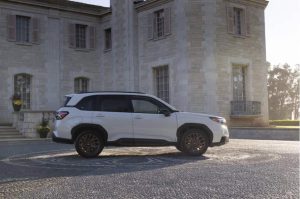







Just upgraded to the newest rig I’ve ever owned, a 2014 Ram eco diesel. It gets exactly the mileage this Subie does, 33 highway and around 25 average, in a useful, quiet, comfortable full size pickup.
I just don’t see what we’re gaining in these new cars, they’re butt ugly (with apologies to the many fine looking butts), they’re heavy, they’re uninspiring, and most importantly they are designed to be disposable/not economically repairable. The 14 Ram is also of course too electronic, but for the next couple years I own it I expect many happy comfortable miles of light towing and usefulness. And I can dream that we will soon get the required reset and practical, economically effective vehicles become available again after the breakdown of centrally managed communist society.
I’m keeping my 2012 Outback 3.6R as long as I can because it has two things that Subaru no longer has available: a 3.6 liter FLAT SIX cylinder engine and the 5EAT 5 speed automatic transmission—perhaps the strongest power train Subaru ever built and ever will. Thanks a lot, Uncle Scam!